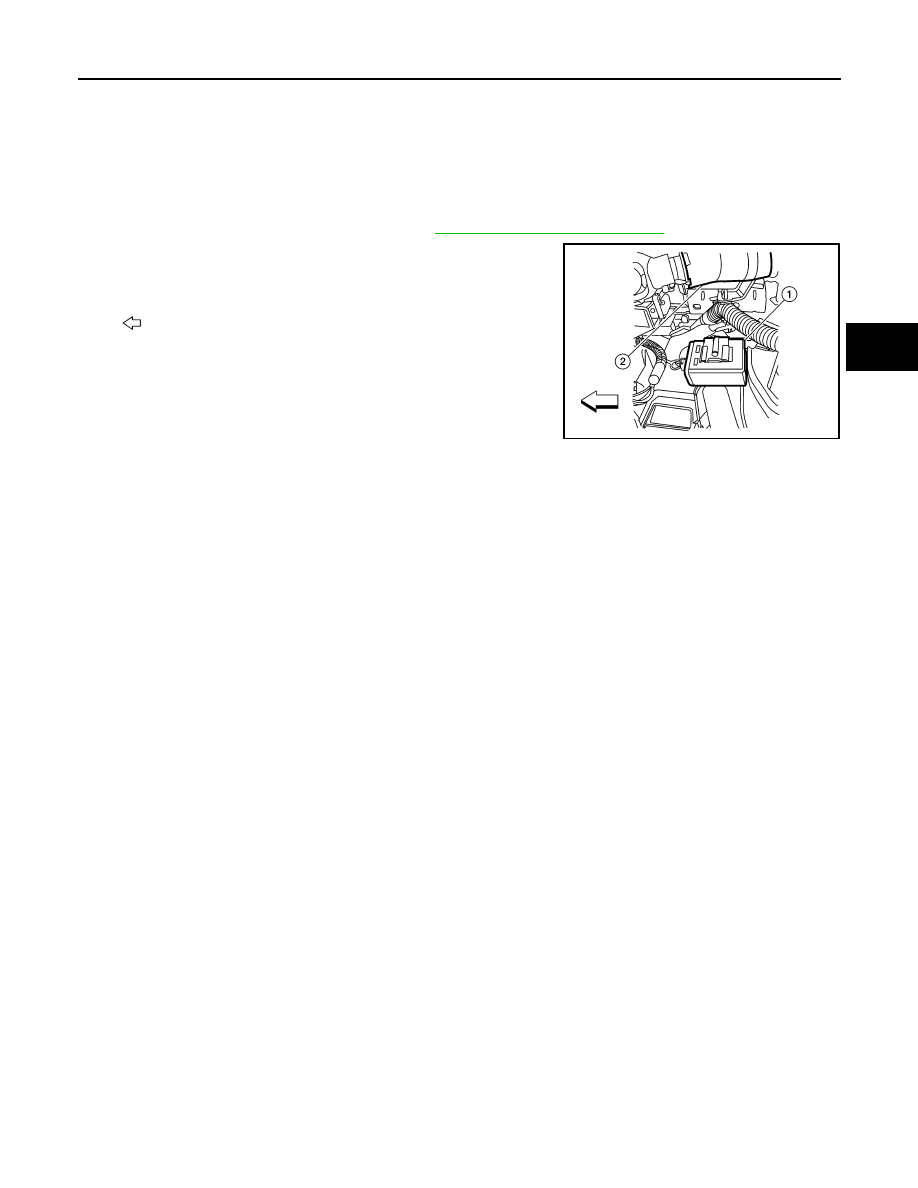Content .. 1122 1123 1124 1125 ..
Nissan Altima HL32 Hybrid. Manual - part 1124

TIRE PRESSURE RECEIVER
WT-61
< ON-VEHICLE REPAIR >
C
D
F
G
H
I
J
K
L
M
A
B
WT
N
O
P
ON-VEHICLE REPAIR
TIRE PRESSURE RECEIVER
Removal and Installation
INFOID:0000000004212532
REMOVAL
1. Remove instrument lower cover (LH). Refer to
IP-12, "Removal and Installation"
2. Locate tire pressure receiver (1) to the right of the steering col-
umn (2) and disconnect the tire pressure receiver connector.
3. Remove the tire pressure receiver (1) from bracket using a suit-
able tool to release the bracket.
•
: Vehicle front
INSTALLATION
Installation is in the reverse order of removal.
ALEIA0011ZZ